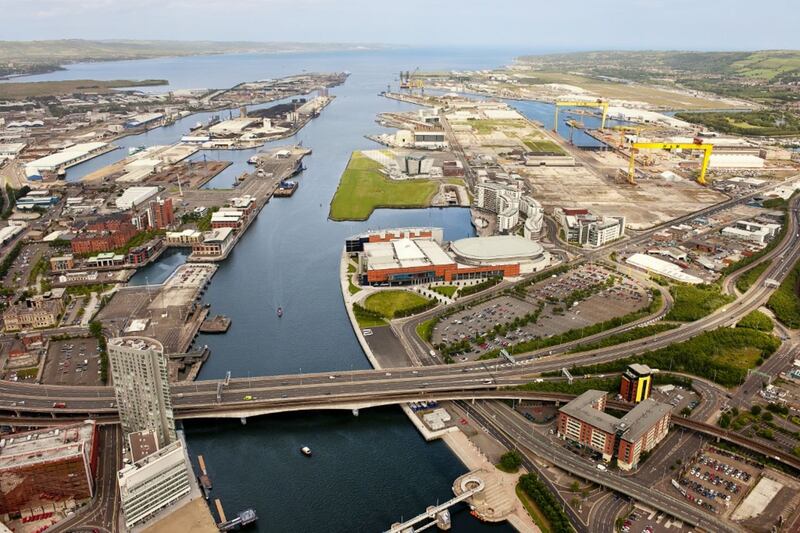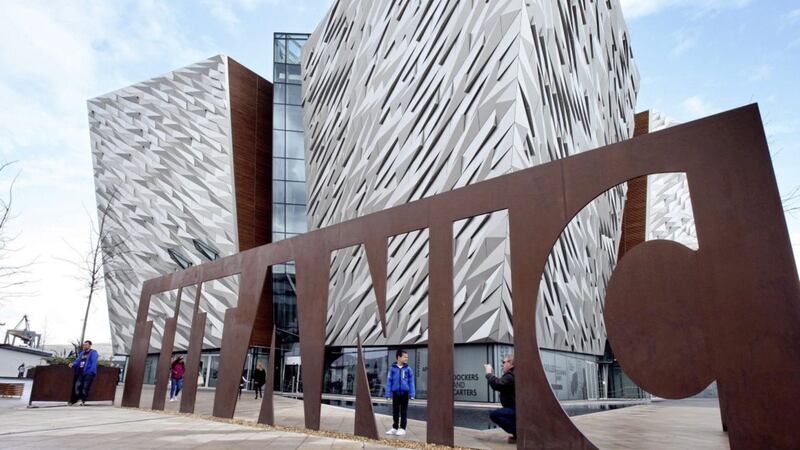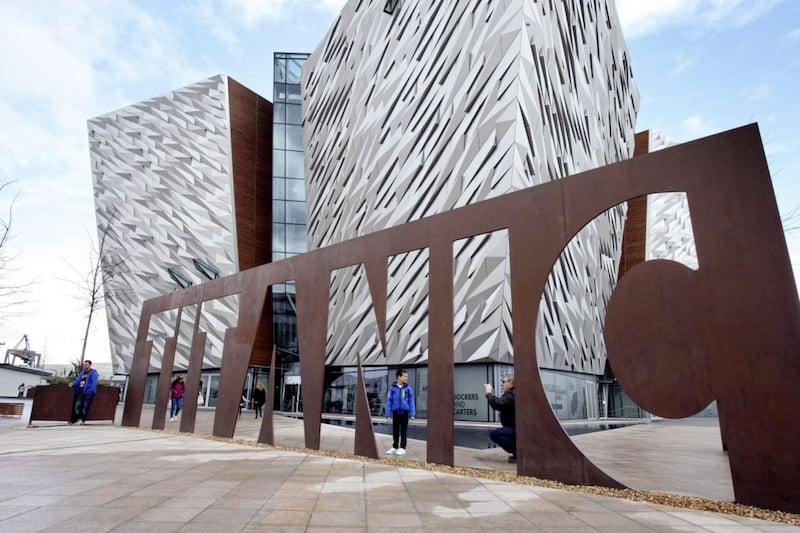PLANNING is under way to develop new sustainable transport links to Belfast’s Queen’s Island in anticipation of a population and tourist explosion in the waterfront location over the next 13 years.
The area, which includes Titanic Belfast, is currently home to around 1,000 residents, with around 12,000 people employed there.
Belfast Harbour and Titanic Quarter Ltd are projecting that an extra 7,800 people will move into the area by 2035, with the workforce more than doubling to 28,400.
They are also forecasting an extra two million visitors per year, bringing the annual total to 5.6 million, with hotel capacity more than tripling to 876 rooms.
Both Belfast Harbour and Titanic Belfast are involved in the bid to develop 778 apartments next to Titanic Belfast. But a number of other massive development schemes are in the works for the surrounding area.
The Department for the Communities has just launched a consultation on the £150 million future development of the nearby Queen’s Quay, while Osborne+Co is progressing a £450m plan to regenerate the old Sirocco Works into Belfast Waterside.
Meanwhile, planning permission is already in place for around 800 residential units at Odyssey Quays.
With growth of that scale, Belfast Harbour and Titanic Belfast have launched an early consultation for the development of a strategic transport masterplan for Queen’s Island.
It aims to maximise sustainable travel by increasing use of public transport such as the Glider, the Titanic Quarter rail halt and bus services, whilst also encouraging active travel such as walking and cycling, including the use of Belfast Bikes.
It will also plan the roll out of new smart traffic technology and propose the upgrade of road junctions.

Work has already commenced on a £3m programme of investment in cycle, pedestrian and road infrastructure to be completed in early 2022.
James Eyre, from Titanic Quarter Limited, said: "We are inviting people who live, work, and visit the area to play their part by helping to plan their future journeys, and share on ideas on how we can encourage greater uptake of sustainable and active travel measures to reduce emissions and improve the overall vibrancy and well-being of this part of the city."
Joe O’Neill, from Belfast Harbour said COP26 had kick-started “challenging, but necessary conversations”.
“We want to ensure travel to and from Queen’s Island becomes even more sustainable, reflecting our focus on sustainable construction and development pioneered in this part of the city. We acknowledge sustainability not only as a stimuli to deliver strategic development but an urgent requirement to do more to transform Belfast into progressive, greener and smart city in its own right.”
An online survey is available via queensislandtransport.com.



